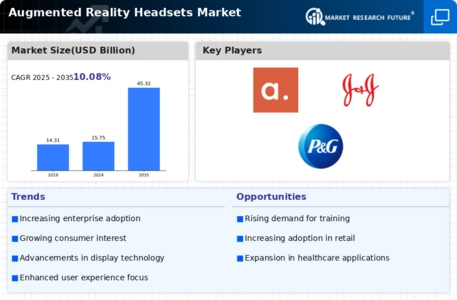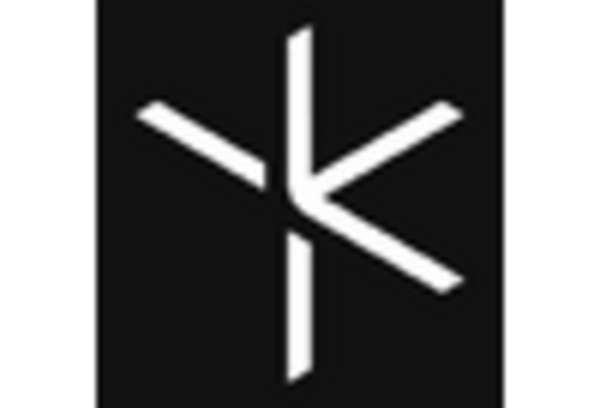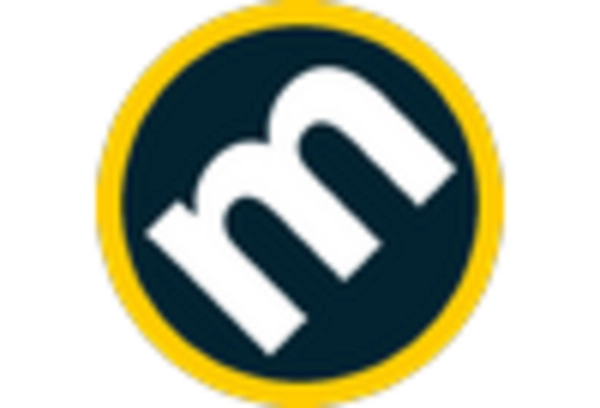The Augmented Reality Headsets Market is currently characterized by a dynamic competitive landscape, driven by rapid technological advancements and increasing consumer demand for immersive experiences. Major players such as Microsoft (US), Apple (US), and Meta (US) are at the forefront, each adopting distinct strategies to enhance their market positioning. Microsoft (US) focuses on enterprise solutions, leveraging its HoloLens technology to cater to industries like healthcare and manufacturing. In contrast, Apple (US) appears to be concentrating on consumer applications, with its anticipated AR headset expected to integrate seamlessly with its existing ecosystem. Meta (US), on the other hand, emphasizes social connectivity and gaming, aiming to create a metaverse experience that encourages user engagement and content creation. Collectively, these strategies indicate a competitive environment that is increasingly centered around innovation and user experience.
In terms of business tactics, companies are localizing manufacturing and optimizing supply chains to enhance efficiency and reduce costs. The market structure is moderately fragmented, with several key players vying for dominance. This fragmentation allows for diverse offerings, yet the influence of major companies like Microsoft (US) and Apple (US) is substantial, as they set trends that smaller firms often follow. The collective actions of these key players shape the market dynamics, fostering an environment where innovation is paramount.
In September 2025, Microsoft (US) announced a strategic partnership with a leading healthcare provider to integrate HoloLens technology into surgical procedures. This collaboration not only enhances the practical applications of AR in critical fields but also positions Microsoft as a leader in the healthcare sector, potentially opening new revenue streams. The strategic importance of this move lies in its ability to demonstrate the real-world utility of AR technology, thereby attracting further investment and interest from other industries.
In August 2025, Apple (US) unveiled its latest AR headset, which is designed to work in tandem with its existing product line, including iPhones and iPads. This launch is significant as it reinforces Apple's commitment to creating a cohesive ecosystem that enhances user experience. By integrating AR capabilities into its well-established product suite, Apple (US) is likely to capture a substantial share of the consumer market, appealing to both tech enthusiasts and everyday users.
In July 2025, Meta (US) expanded its AR platform by acquiring a startup specializing in AR content creation tools. This acquisition is indicative of Meta's strategy to bolster its content ecosystem, allowing users to create and share AR experiences more easily. The strategic importance of this move lies in its potential to enhance user engagement and retention, as well as to position Meta as a leader in the burgeoning AR content market.
As of October 2025, current competitive trends in the Augmented Reality Headsets Market include a strong emphasis on digitalization, sustainability, and the integration of artificial intelligence. Strategic alliances are increasingly shaping the landscape, as companies recognize the value of collaboration in driving innovation. Looking ahead, competitive differentiation is likely to evolve, with a shift from price-based competition to a focus on technological innovation, user experience, and supply chain reliability. This evolution suggests that companies that prioritize these aspects will be better positioned to thrive in an increasingly competitive market.


















Leave a Comment